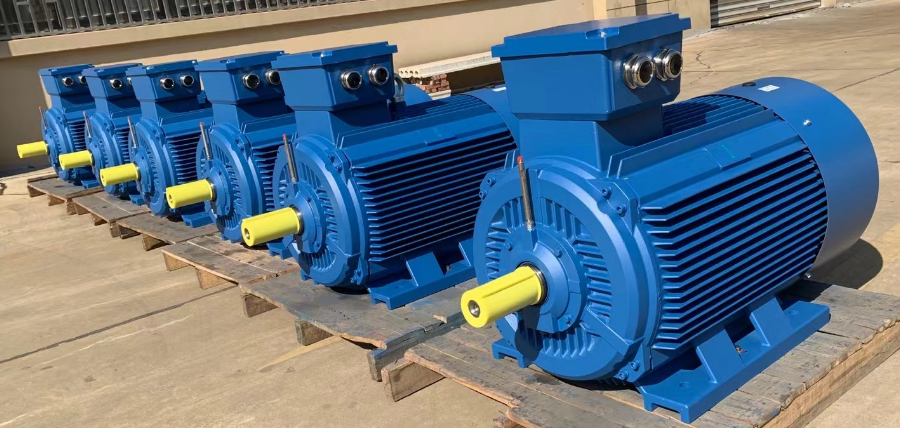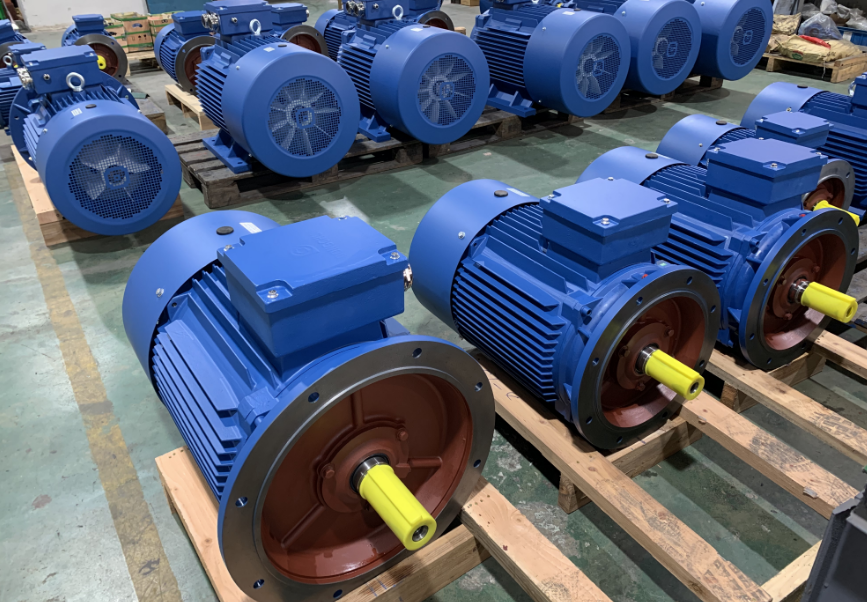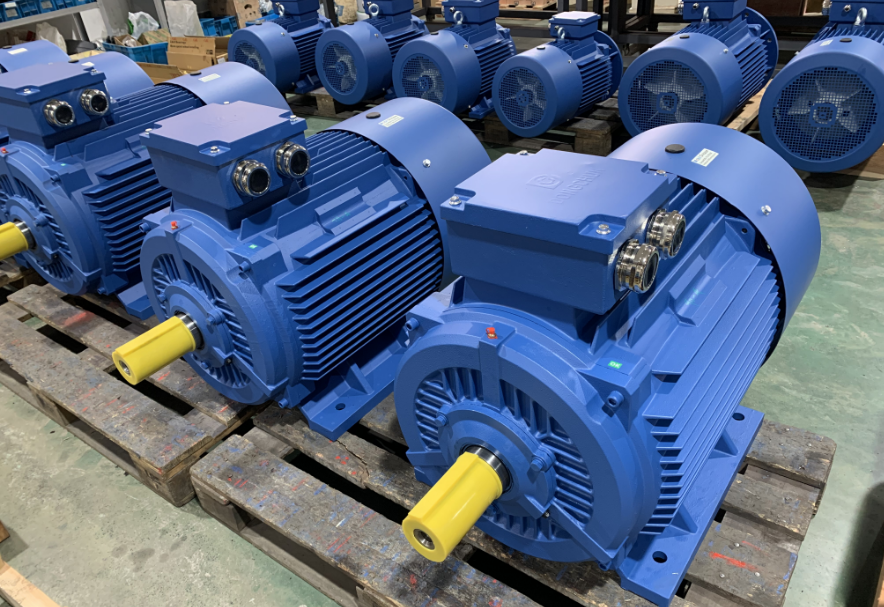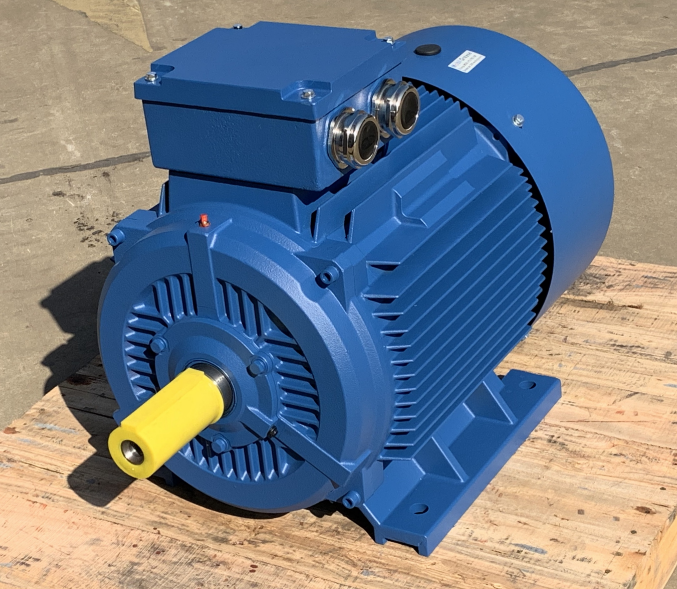There are many ways to start an electric motor, including direct start, autotransfer, Y-Δ voltage reduction, soft starter, frequency converter and so on.
So what is the difference between them?
1. Full voltage direct start
ምንም እንኳን የግርጌ ማደንዘዣው እና ጭነቱ ሙሉ-ልቴጅ ቀጥታ የመጀመርን ጅምር እንደሚፈቅድ, የሙሉ vol ልቴጅ ቀጥታ መነሻ ሊያስብ ይችላል.
ጥቅሙ ለመቆጣጠር, ለመጠገን ቀላል እና ኢኮኖሚያዊ ሁኔታን ቀላል ለማድረግ ቀላል ነው.
በዋነኝነት የሚያገለግለው አነስተኛ የኃይል ኤሌክትሪክ ሞተሮችን ለመጀመር ነው.
ኤሌክትሪክ መቆጠብ, የኤሌክትሪክ ሞተርስ ከ 11 ኪ.ግ የበለጠ ከ 11 ኪ.ሜ በላይ በዚህ መንገድ ጥቅም ላይ መዋል የለባቸውም.
2、Autotransformer reduced voltage starting
ይህ ዘዴ ከተለያዩ ሸክሞች ፍላጎቶች ጋር መላመድ ስለሚችል ብዙውን ጊዜ ትልልቅ የአቅም ኤሌክትሪክ ሞተሮችን ለመጀመር ያገለግላል.
ዋነኛው ጠቀሜታው የሱፉ ጅረት ከ 80% ሲነግስ 64% የሚደርስ የከፍተኛ ጅምር ጀልባ ነው.
የመጀመሪው ጀልባ በቧንቧ ሊስተካከለው ይችላል.
አሁንም ቢሆን በሰፊው ጥቅም ላይ ውሏል.

3. Y-Δ start
For a squirrel-cage asynchronous electric motor with a triangular stator winding in normal operation.
If the stator winding is connected to a star when starting and then to a triangle after starting, the starting current can be reduced and the impact on the grid reduced.
This is called star-delta reduced voltage starting, or simply star-delta starting (Y-Δ starting).
If the direct starting current is 6-7 Ie, the starting current is only 2-2.3 times higher when the star-delta starting is used.
This means that with star-delta starting, the starting torque is also reduced to 1/3 of that of a direct start with a triangular connection.
This means that the starting torque is reduced to 1/3 of that of a direct triangular connection, which is suitable for no-load or light-load applications.
The star-delta starter is the simplest and cheapest in comparison with any other reduced voltage starter.
In addition to this, the star-delta starting method has the advantage that the three phase induction motor can be operated with a star connection when the load is light.
In this case, the rated torque can be matched to the load, which improves the efficiency of the induction motor and saves power consumption.
4、Soft starter for servo motors
This uses the phase-shifting principle of the SCR to achieve voltage regulation and start the servo motor.
Due to the use of silicon controlled components, harmonic interference during the operation of the SCR is high and has a certain impact on the grid.
In addition, fluctuations in the power grid can also affect the conductivity of the thyristor element, especially when there are multiple thyristor devices in the same grid.
Therefore, the failure rate of silicon controlled components is higher, because it involves power electronics, so the requirements of maintenance technicians are also higher.
5、Inverter
The frequency converter is the most technically advanced, versatile and effective motor control device in the modern motor control field.
It regulates the speed and torque of the vibrating motors by changing the frequency of the grid.
Because they involve power electronics and microcomputer technology, they are costly and require a high level of maintenance technicians.
So they are mainly used in areas where speed regulation is required and where high speed control is required.
Comparison of the advantages and disadvantages of reduced voltage start, soft start and variable frequency start
The disadvantage is that the starting torque is small and it is only suitable for no-load or light-load starting.
The advantage is that it is cheap.
Soft start, where the start time and initial torque can be set to achieve a soft start and soft stop, and the start current can be limited.
Inverter start, which allows smooth starting at a set time and allows the machine to run at a set frequency, is more expensive for starter motor .

Comparison of the performance principles of pressure reducing start, soft start and frequency conversion start
1, ለስላሳ ጅምር, ለስላሳ ጀግና የ vol ልቴጅ ደንብ እና የኃይል ማሻሻያ ቴክኖሎጂ ጥምረት ነው.
ለስላሳ ጅምር ለማሳካት ለስላሳ የ Poler ልቴጅ ደንብ በኩል ነው, ለስላሳ የማቆሚያ ሞተር, የፍጥነት ቁጥጥር ተግባር የለውም.
2, ኢንተርናሽናል የኃይል ሴሚሚኮንድኪ መሳሪያዎችን የሚጠቀም የሞተር ቁጥጥር (የፍጥነት መቆጣጠሪያ) መሳሪያ ነው.
በድግግሞሽ ልውውጥ የመቆጣጠሪያ ሞተር ኦፕሬሽን (Vol ልቴጅ እንዲሁ እንደ v / አር ቋሚ, ፍጥነትን እና ከፍተኛ ብቃት ባለው ድግግሞሽ ውስጥ ለውጦች የተደረጉ ለውጦች ናቸው.
ድግግሞሽ መለዋወጥ እውነተኛ ለስላሳ ጅምር, ለስላሳ ማቆሚያ እና ውጤታማ የፍጥነት ደንብ ማሳካት ይችላል.
የመግቢያው ትልቁ ጠቀሜታ የመነሻ ጅረት ሰፋ ያለ ነው.
When the motor windings tap is at 80%, the starting torque can reach 64% of the direct starting torque.
የመጀመሪው ጀልባ በቧንቧ ሊስተካከለው ይችላል.
They are still widely used today.
The Y-Δ is suitable for unloaded or light load starting.
It is also the simplest and cheapest of all reduced voltage starters to be worked with other equipment.
In addition to this, the star-delta starter has the advantage that the motor can be operated in the star configuration when the load is light.
In this case, the rated torque can be matched to the load, which increases the efficiency of the motor and saves power consumption.

Comprehensive analysis of pressure reducing start, soft start and frequency conversion start
1、Price problem
Naturally, frequency converters are the most expensive, while Y-Δ and autotransfer reduced voltage starters are relatively cheap.
አነስተኛ ግብዓቶች ላላቸው ፕሮጀክቶች, ኢኮኖሚ ተመራጭ ምርጫ ይሆናል.
2, ለራስ ትራንስፎርመር የሚቆጣጠር ችግር
Y- δ, የራስ-ሰር ጎዳናዎች የ voltage ልቴጅ ጅምር ቀላል ነው, ግን ብቻ ይጀምሩ.
ሆኖም, በከፍተኛ ራስ-ሰር ውስጥ, ለስላሳ ጅምር እንኳን ሳይቀር ብዙውን ጊዜ ጥቅም ላይ እንደሚውል ይጠበቃል.
የፍጥነት እና voltage ልቴጅን ጨምሮ በተከታታይ ተለዋዋጭነት ቀላል የሞተር ሞተር ቁጥጥር ከደረቀ የ voltage ልቴጅ መጀመሪያ ወይም ለስላሳ ጅምር ጋር ተዛመደ ነው.
ለዚህ ነው ድግግሞሽ ተለዋጆች ወደ ትልልቅ ወይም በጣም በራስ-ሰር የማምረቻ መስመሮች እንዲመረጡ የሚመረጡት ለምን ነው.
3, የአውታረ መረብ ግንኙነት
አስከፊው ራሱ ራሱ መገናኘት እና በእራሱ በተቀናጀ ወይም በተራዘመ የግንኙነት ወደብ ቁጥጥር ሊደረግበት ይችላል.
Soft start can also do some monitoring, but to achieve real-time monitoring of the stepper motors, but also the reduced voltage start, soft start can not be compared to.
4、Maintenance
As Y-Δ and autotransfer reduced voltage starters are relatively simple, they are naturally the easiest to maintain.
I am actually very opposed to the use of soft start, if not choose the inverter, will certainly choose directly Y-Δ or autotransfer reduced voltage start.
The inverter is capable of soft starting and soft stopping of the motor, so for relatively large loads, Y-Δ, autotransformer or soft start is no match for the inverter.

Additional knowledge comparison
1. Soft starters and frequency converters
ሁለቱም ድግግሞሽ መለወጫዎች እና ለስላሳ ጅምር መሣሪያዎች የ voltage ልቴጅ የመነሳት ምድብ ናቸው.
ምንም እንኳን ድግግሞሽ መለወጫዎች በበሽታ ጊዜ ቅነሳ ከተቀነሰ በኋላ የ Vol ልቴጅን የሚቀንሱ ቢሆኑም የማያቋርጥ ቶራንግ ሙሉ ጾም ነው.
ለስላሳ ጅምር ከ voltage ልቴጅ 0 እስከ ሙሉ የ volt ልቴጅ የመጀመር ሂደቴም ነው.
ድግግሞሽ ባለሙያው በማንኛውም ጊዜ የሞተር ፍጥነትውን ለመቆጣጠር በምርመራዎች የሚቆጣጠር ሲሆን የመሳሪያ ምልክቶችን በማንኛውም ጊዜ ሊቆጣጠር ይችላል.
ለስላሳ ጀማሪው ሊያገለግል የሚችለው አዲሱ ሞተር ሲጀምር የ voltage ልቴጅ ቅነሳ ዓላማ ብቻ ነው.
2. የኤሌክትሪክ ሞተስ በአጠቃላይ ዘዴዎች የሚጀምሩ ዘዴዎች
Common methods of new motor starting: full voltage direct start, autotransfer reduced voltage start, Y-Δ start, soft start, variable frequency start, etc.
Where both the grid and the load allow, direct starting is preferred as it is easy to manipulate and control and is more economical.
Although the autotransformer is an old-fashioned starting device, it can be adapted to the needs of a wide range of loads by using the multiple taps of the autotransformer to reduce the voltage and obtain a larger starting torque.
የኮከብ-ዴልታ ዘዴ ጥሩ የአሁኑ ባህሪዎች እና ድሃ የዝናብ ባህርይ ብቻ ነው, ስለሆነም ይህ ዘዴ ቀላል እና ርካሽ ነው, እናም በብርሃን የመድኃኒት አሠራር ውስጥ የኃይል ፍጆታ ውስጥ ማስቀመጥ ይችላል.
እነዚህ ሁሉ የመነሻ ዘዴዎች በመነሻው ሂደት ወቅት የሁለተኛ ደረጃ ጉድጓዶች የሚከሰቱ ግልፅ ውርደት ሲጀምር የተቀነሰ የቅናሽ ቁስለት ሲጀምር ነው.

3. Comparison between soft start and traditional reduced voltage starting methods
①no ወቅታዊ
የዲሲ ሞተር ሲጀምር ለስላሳ ጀማሪው ቀስ በቀስ የአስተማሪን ማስተላለፊያ አቅጣጫ ቀስ በቀስ ይጨምራል, ሞቶው ከዜሮ ወደተዘጋጀው እሴት ወደ ሚታበለው ዋጋ እንዲነሳ ያደርገዋል.
The soft starter has no impact on the dc motors, which improves the reliability of the power supply, smooths the start, reduces the impact torque on the load machinery and extends the service life of the machine.
2.Soft stop function
That is, smooth deceleration and gradual stopping, it can overcome the disadvantages of instantaneous power-off stopping, reduce the impact on heavy-load machinery, avoid the water hammer effect of high-range water supply systems and reduce equipment damage.
③Adjustable starting parameters
The starting current can be freely and steplessly adjusted to the optimum starting current, depending on the load and the relay protection characteristics of the grid.
Soft starters and frequency converters are two completely different products.
የድግግሞሽ መለወጫ የፍጥነት ደንብ በሚፈለግበት ቦታ እና ውጤታቸው የ voltage ልቴጅውን ብቻ ሳይሆን ድግግሞቹን ብቻ አይደለም.
አስከፊው ለስላሳ ጀማሪዎች ባህሪዎች አሉት, ግን በጣም ውድ እና በጣም ውድ እና በጣም ውድ እና ቀላል ከሆነው የበለጠ በጣም ውድ እና የተወሳሰበ ነው.
ለማንኛውም የኤሌክትሪክ ሞተሮች መረጃ በአስተያየቶች ቦታ ላይ መልእክት ለመተው እንኳን ደህና መጡ።
ስለ ኤሌክትሪክ ሞተር ማንኛውም ጥያቄ ፣ እባክዎን በቻይና ውስጥ ካለው ኤሌክትሪክ ሞተር ከ TOP አምራች ጋር ይገናኙ -ዶንግቹን ሞተር እንደሚከተለው;

ዶንግቹን ሞተር እንደ መጓጓዣ፣ መሠረተ ልማት እና ግንባታ ባሉ የተለያዩ ኢንዱስትሪዎች ውስጥ የሚያገለግሉ ሰፊ የኤሌክትሪክ ሞተሮች አሉት።
ፈጣን ምላሽ ያግኙ።








